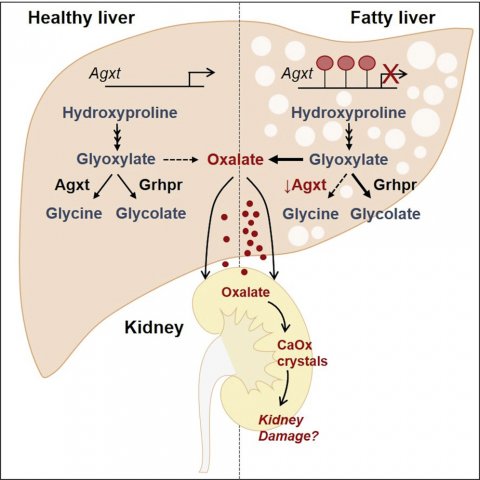Image source: Shutterstock/Nerthuz
News • Nephrolith research
Fatty liver disease promotes formation of kidney stones
Non-alcoholic fatty liver disease (NAFLD) is the most common liver disease in western countries, with an increasing incidence worldwide. Consequences of NAFLD can also include kidney disease and kidney stones, although the mechanisms for the development of these kidney complications as a result of NAFLD have not yet been fully explained.
Researchers at the Leibniz Research Centre for Working Environment and Human Factors in Dortmund (IfADo) have now published a paper in the journal Cell Reports on how fatty liver disease promotes the formation of kidney stones.

Image source: Gianmoena et al., Cell Reports 2021 (CC BY-NC-ND 4.0)
Researchers at the IfADo have found out in studies that the metabolic processes in the liver are disturbed by fatty liver disease. As a result, there is a higher accumulation of oxalate. Oxalate is not only present in some foods, but is formed as a metabolic product in the liver and excreted through the kidneys in the urine. An increased concentration of oxalate in the urine is associated with a higher risk of progression of chronic kidney disease because oxalate binds calcium, which can lead to the formation of kidney stones.
Although kidney stones are usually not life-threatening, they often recur and are the cause of chronic kidney disease. In a healthy liver, the enzyme Alanine Glyoxylate Aminotransferase (AGXT) prevents excessive formation of oxalate. However, the IfADo study shows that AGXT expression is decreased in fatty liver and therefore cannot fulfill its function sufficiently. Fatty liver disease is thus also a risk factor for kidney stones and chronic kidney disease.
Source: IfADo – Leibniz Research Centre for Working Environment and Human Factors
25.08.2021











